Passed Away On Father's Day
by ANN E-Media Producer Paul Plack
Aero-News recently learned Chuck Vanek, a pioneer in the
development of small gyroplanes, and father of Sport Copter
president Jim Vanek, passed away at the age of 86 on Father's Day,
following a long illness.
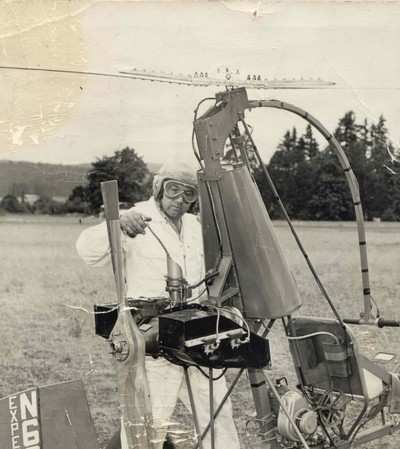
Chuck had some aeronautical education in college, but chose a
career as a police officer in Portland, OR. When he saw pictures of
Dr. Igor Bensen's first Bensen Gyrocopter, with its frame built of
heavy water pipe, he was inspired to explore his own designs.
By 1957, Chuck was flying the first Vancraft gyroplane over
Scappoose, OR. By the following year, some friends were joining
him. While Bensen quickly abandoned crude water pipe airframes in
favor of bolted aluminum tubing, Vancraft machines were made of
welded mild steel tube.
Like Bensen, Chuck Vanek used military surplus McCulloch
two-stroke drone engines, still favored by some purists today for
their power-to-weight ratio. Both Bensen and Vanek later used
air-cooled, four-stroke Volkswagen automotive engines. The last
Vancraft machines featured the two-stroke Rotax 503.
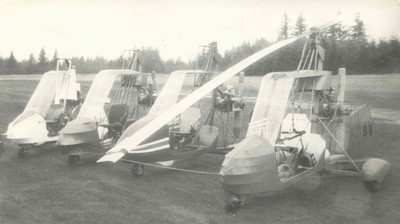
Where Bensen's designs grew from his experience as an engineer
for General Electric, Vanek was pure amateur experimenter. Several
Vancraft builders in the late 50s followed Chuck's lead into ducted
fans, which were abandoned after weight and rigidity problems. One
of Vanek's most outrageous creations, a "flying ring" powered-lift
using the notoriously unreliable McCulloch driving a ducted fan,
was successfully test-flown, but never developed further.
Vancraft introduced innovations common on today's small
gyroplanes. To shorten takeoff roll, Chuck developed a hand-crank
prerotator using a 90-degree gear set sourced from Maytag
ringer-style washing machines, to allow safely initiating
autorotation while strapped in the seat. Vanek was an early
proponent of effective horizontal stabilizers on gyros, an idea
Bensen and many other designers rejected.
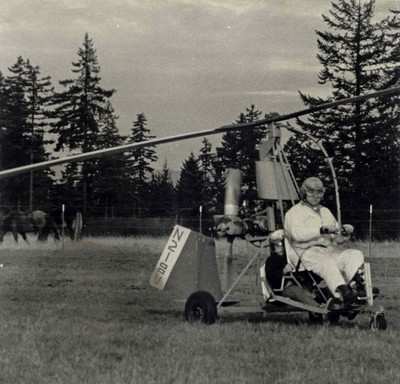
When Bensen said in the 1960s that a two-place version of his
Gyrocopter was not feasible, Vanek demonstrated a McCulloch-powered
tandem version of the Vancraft, flying with his young son, Jim.
Later, he developed a VW-powered tandem which performed well with
two large adult passengers, and won EAA's Charles Lindbergh Award
at Oshkosh in 1985.
Vanek's occasional one-upsmanship of Bensen got a chilly
reception from some in the sport, especially within the Popular
Rotorcraft Association (PRA), which began as the Bensen Owners
Group. While Bensen's salesmanship and ubiquitous Popular Mechanics
ads made his machine an icon for the sport, Vancraft remained
primarily a Pacific Northwest phenomenon, despite production which
briefly reached 30 per month in the mid-80s, just before Vancraft
closed over Chuck's liability concerns.
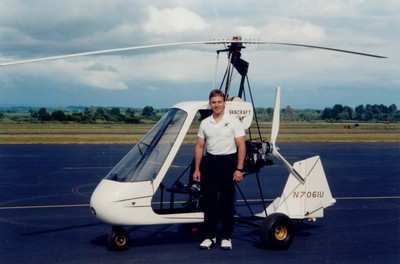
Chuck's teenage son, Jim (shown above) was around his father's
machines all his life, and by the 1980s was becoming a proficient
machinist, designer, and pilot. Jim developed the tooling which
enabled volume production of Vancraft gyroplanes. After Vancraft
ended production, Jim moved forward with his own, new designs,
opened Sport Copter after a three-year hiatus, and began sales of
the single-place Vortex and Lightning in 1991.
Today, Sport Copter is also an original equipment manufacturer
of bonded, aluminum, gyroplane rotor blades for other gyroplanes,
as well as serving the aftermarket. The Sport Copter Super Sport, a
sophisticated side-by-side, enclosed, two-place machine, will debut
this summer at EAA AirVenture Oshkosh. The company is rapidly
outgrowing its 12,000 square foot manufacturing facility at the
Scappoose Industrial Airport on the Columbia River west of
Portland, OR.

Chuck Vanek was honored as a "Gyroplane Pioneer," by New York's
Hofstra University in April 2003. He is credited for his early
contributions to gyroplane design and the development of the
"flying ring" in Jane's All The World Book of Aircraft History.
A 1961 Vancraft Gyroplane, with its Maytag prerotator, is on
permanent display at Oregon's Naval Air Station Tillamook, a former
blimp base on the Oregon coast. From time to time, Vancraft
machines still show up in for-sale ads. Enthusiasts say there are
hundreds more sitting in barns, garages and basements across the
Pacific Northwest.
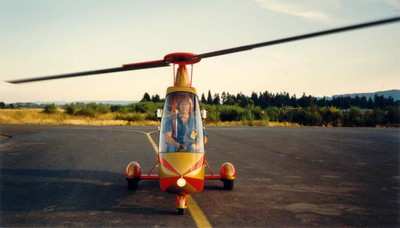
And on the second Saturday of each month, at noon, in the Sport
Copter hangar, members of The Great Northwest Sport Rotorcraft
Association, PRA Chapter 73, meet to enjoy gyroplanes and remember
the man they first saw fly one.
 ANN's Daily Aero-Term (05.05.25): Circle To Runway (Runway Number)
ANN's Daily Aero-Term (05.05.25): Circle To Runway (Runway Number) ANN's Daily Aero-Linx (05.05.25)
ANN's Daily Aero-Linx (05.05.25) NTSB Prelim: De Havilland DHC-1
NTSB Prelim: De Havilland DHC-1 Classic Aero-TV: The Boeing Dreamliner -- Historic First Flight Coverage
Classic Aero-TV: The Boeing Dreamliner -- Historic First Flight Coverage Airborne-NextGen 05.06.25: AF Uncrewed Fighters, Drones v Planes, Joby Crew Test
Airborne-NextGen 05.06.25: AF Uncrewed Fighters, Drones v Planes, Joby Crew Test








